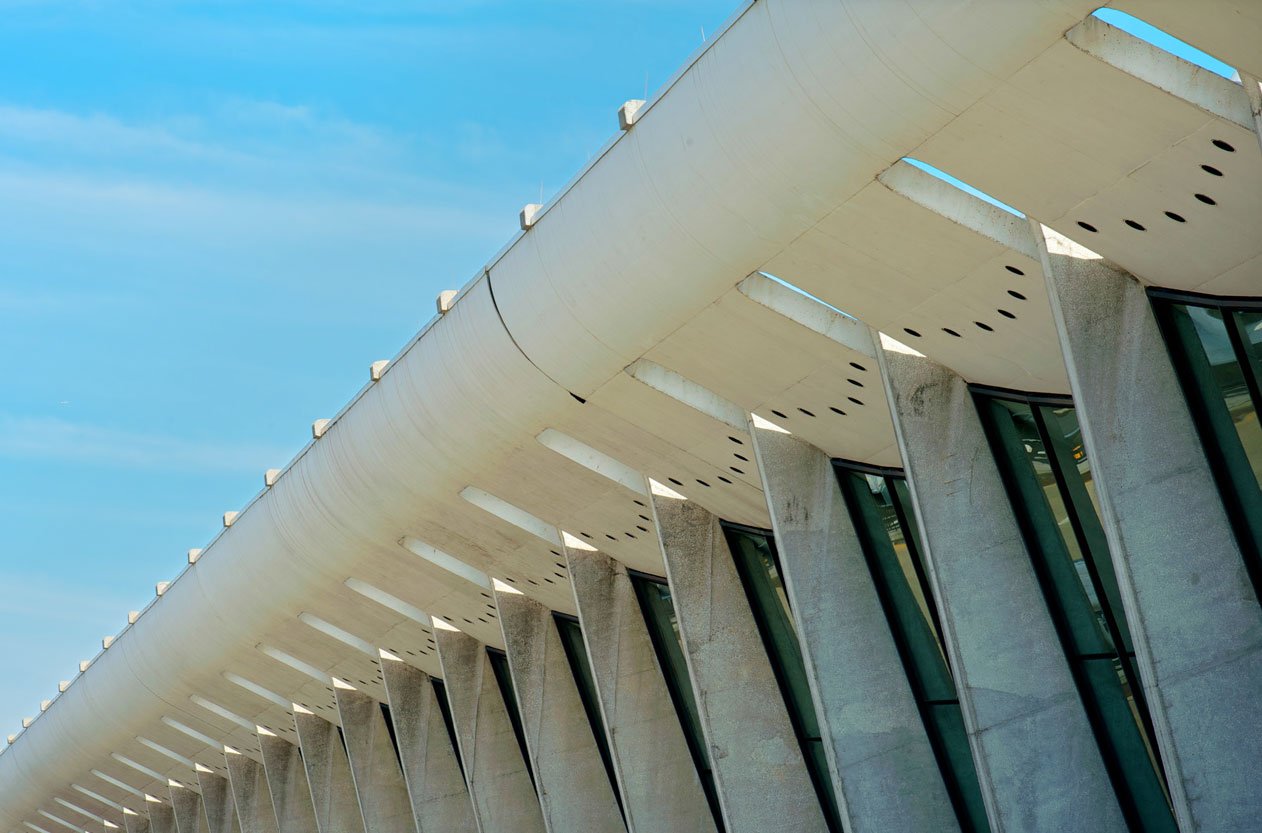Science | Introduction
Science | Introduction
Catenary Curves: Scientific Experimentation

Overview
Students will design and conduct an experiment about catenary curves and their structural qualities. Using Dulles International Airport as a case study, students will investigate how catenary curves are important to the structure of the building.
Grade: 6-12
Time: 3 class sessions
Standards & Objectives
This lesson addresses selected standards from the McRel Standards for Science. These can be found in the section titled “Science Standards.”
In addition to the Science Standards, students will be able to:
- Understand how a catenary curve is formed.
- Understand how a catenary curve is used at Dulles International Airport.
- Understand the materials used to form the catenary curve at Dulles.
- Hypothesize how the Dulles roof could have looked different while still using catenary curves (e.g., longer or shorter cables would have changed the shape).
Teach This Lesson
Preparation and resources for teaching this lesson are found in the section titled “Science Preparation and Resources.”
Instructions for teaching this lesson are found in the section titled “Science Instruction.”
Interdisciplinary Connections
The PBS television program, 10 Buildings that Changed America, provides lesson plans in four additional subjects: Art, English Language Arts, Mathematics, and Social Studies. All five lessons are combined in an interdisciplinary unit: One Building to Change My Community.
This Science lesson can be paired with another 10 Buildings that Changed America lesson plan to create interdisciplinary connections.
- Art: After experimenting with different ways to build a curved structure, students can apply this knowledge to their design in the Art lesson to make a model.
- Mathematics: Students can use the concept of scale, taught in the Mathematics lesson, to draw the structure that they designed in the Science lesson. This gives students the opportunity to understand how big their models are in real life.
- English Language Arts: During student research on the Seagram Building, ensure they learn about the structure and materials of the building. As an extension of the Science lesson, students can design and conduct an experiment to explore steel framing.

